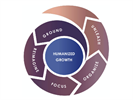Paul Holmes 05 Jul 2016 // 4:44AM GMT

CANNES—Companies with the most “earned influence” in the marketplace see improved performance on the top line and bottom line, according to Andrew Tucker, chief executive of Mettle Consulting and a PhD in trust analytics.
Tucker was introducing the Earned Influence Index, a new tool developed in partnership with Ogilvy Public Relations and PricewaterhouseCoopers that seeks to define trust in terms that are relevant to corporate and brand performance, demonstrate the ways that “earned influence” builds trust, and provide companies with actionable information that will help them manage trust for competitive advantage.
Tucker says the new approach is the result of 10 years of theoretical modeling, three years of work with PwC clients—including rigorous testing—and a year building the data and analytics capability to deliver results in real-time.
The new model breaks trust in brands into three components:
- Competence trust: Does the brand do what it says it will do on a purely transactional basis? Key drivers include delivering on the brand promise and reliability.
- Experience trust: Does the brand do what it says it will do consistently, over time? Expertise and sector leadership and critical components.
- Values trust: does the brand share its customers’ values and beliefs? Customers are looking for vision, community involvement, and sociability.
Each industry sector has a distinct “trust profile,” which means the importance of these three kinds of trust can vary. Similarly, Tucker’s research suggests that trust works “slightly differently in Asia and Europe and the US,” which means that companies need to manage their trust profiles in a specific and individualized way.
Tucker describes earned influence as “that moment when a brand has enough trust with its customers that they become advocates and they do your work for you” and says his research demonstrates that “If you move trust a point, there is a high probability that it will have this impact on top and bottom lines.”
Critically, the research has found that effective public relations can build all three kinds of trust. It builds competence trust by explaining the benefits of the product and providing credible evidence of reliability; experience trust by positioning the brand as “shaping the market” and being responsive to customers; and values trust by demonstrating the impact of the brand on society as a whole and showing the company putting its customers’ needs first.
And brands need to measure trust—monitoring everything that is being said about them in media ranging from The New York Times to Twitter—on a quarterly basis at least to ensure their information is current. Such monitoring produces significantly better results—in terms of the link between trust and performance—that simply asking people whether they trust a particular company.
“Trust is much more volatile than we think and should be measured much more frequently,” says Tucker.
Ogilvy chief executive Stuart Smith (pictured) believes the research will elevate the role of public relations and provide senior executives with a more meaningful way of measuring its impact.
“CMOs are already more interested in what we do and what we can bring to the marketing mix,” says Smith. “And they are interested in reputation and trust more than they have been in the past five or 10 years. This is a chance for the reputation and trust industry to scale itself into the marketing space.”
Tucker agrees: “The two people who really care about trust at the moment are the CMO and the CFO. If they haven’t got trust right, their jobs are in peril. So there is a lot of concern that organizations need to get this right.”
Adds Sam Tomlinson, a partner at PwC in London, ““PwC mission statement starts with ‘building trust in society,’ and over the last five to 10 years we have been exploring the rigorous, independent measurement of trust itself. Trust is a fantastic leading indicator of business performance and sales and profit. We believe trust should end up being at the heart of how businesses handle their brands and their performance.”


































.jpg)

















